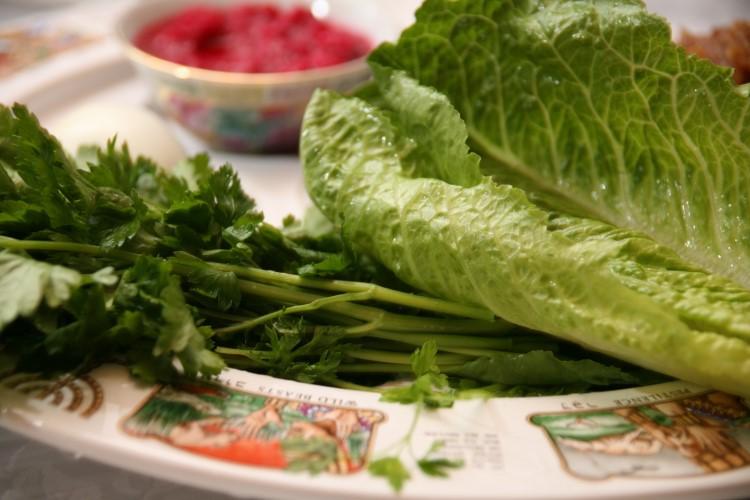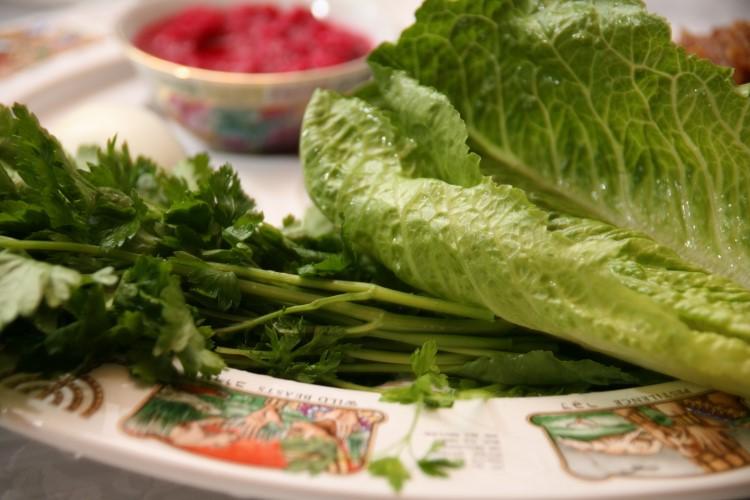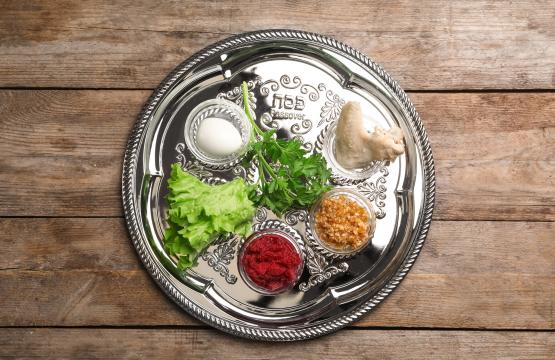
Certainly one of the highlights of the Jewish religious year is the Passover Seder. This is more than just delicious foods like matzah ball soup and brisket. The main purpose is to retell the story of Israel’s redemption from the slavery of Egypt through the reading of the Haggadah. This booklet gets its name from Exodus 13:8 where Jews are exhorted to “tell” their children about God and His works. A most interesting part of the traditional readings includes four sons who have differing responses to the same story.
One child (not in sequential order for this article) is called the Simple Son (Hebrew – tam). He is described like this because, as he is participating in the Seder meal, he poses a simple question: “What is this?” Perhaps the details of the holiday are new to him, and he simply does not understand their significance. Evidently, he is not asking out of a rebellious spirit, but he is merely confessing his ignorance.
The answer for this child is therefore simple, explaining that God brought us out of Egypt with a strong hand. This seems to be basically a good kid who has a childlike approach to things. Some adults may wish that this attitude was different, but it is often commended in the Bible.
Too many people today approach life with arrogance and self-sufficiency that can actually lead them away from the things of God. Our Messiah Yeshua reminded us that it is often those who have a simple, childlike approach who will enter the Kingdom of God (Matthew 19:13- 15). The Haggadah reminds us that there are many who may be ignorant but who want to know the reality of God.
A second child is called the Wicked Son (Hebrew – rasha). This son is so described because he frames his question in a negative manner: “What is the meaning of this to you?” He seems to doubt that the Seder ceremony relates to him in a personal way but only relates to others.
In essence, the Wicked Son separates himself from the reality of the redemption story and excludes himself from the group. This is like the person that we may meet who says they are “happy for you” concerning your faith but doesn’t see it relating to themselves.
The Haggadah has a direct answer for such a person: “It is what God did for me when I came out of Egypt.” At the first Passover, each person was required to personally taste of the Passover Lamb. If not, then the Angel of Death would bring judgment. As with the Wicked Son of the Haggadah, there are still people who exclude themselves from God’s way of redemption which comes through the work of Yeshua as the Passover Lamb.
A third child is described as the Son Who Doesn’t Know How To Ask (Hebrew – sh’eyno yodea lishol). This son is not even asking probing questions and perhaps not even seeking. This may seem like a great barrier; where do you even start with such a person?
The Haggadah seems to skip over those concerns and simply gives the Torah exhortation that we have an obligation to tell our children whether they are interested or not. God did some great things for us, and we are commanded to proactively tell the story! As the Passover story must be shared with all, so too must the later Messianic redemption of Yeshua on that Passover of the first century.
There are many people today, both Jews and non-Jews, who would love to know the whole story of Messiah’s work on our behalf. In some of His last words, Yeshua gives the Great Commission to share this story with all people, even those who may not be asking (Matthew 28:19-20).
The fourth child of the Seder especially stands out as he is called the Wise Son (Hebrew – chacham). This son is commended as he asks the deeper question: “What is the meaning of these customs which God has commanded us?” This child seems to be aware and educated on some of the significance of Passover but still wants to know more.
The answer given in the Haggadah is profound as it says to explain to him all the laws even “to the very last detail about the Afikoman (AH-fee-KOH-men).” Those who are familiar with the Seder know that the Afikoman is a central part of the meal that has great spiritual significance. It is the middle matzah (unleavened bread) which is part of the container of three matzahs placed on Jewish tables every Seder.
After all these centuries, it is still a mystery as to why we take out the middle matzah, break it and hide it away. After a period of time, our kids search for this hidden matzah and, after it is broken, we share it with all at the table.
One possible explanation is found in the name given to this special broken matzah, Afikoman meaning “that which comes last” or even “dessert.” This is logical as the Afikoman is that last thing tasted at the Jewish Seder after the full meal.
This fourth child asks a very intriguing question that all Believers in Yeshua can understand. Yeshua our Messiah explained the details as He told His Jewish disciples how all aspects of the ceremony point to Him! He would be broken, hidden away for a while and then reappear. He then encouraged us at every subsequent Passover Seder to partake of this Afikoman as a picture of His redemptive work as our Passover Lamb.
Many Christians call this Communion or the Eucharist, but educated Believers also understand that it all comes from the Seder traditions.
This year, Jews around the world will recount the interesting details of the four sons of the Seder. Each person has a different response to the same Seder meal. May we be like that Wise Son who seeks the deeper meaning of the holiday customs. As the Scripture says, “When you seek Me, you will find Me” (Jeremiah 29:13).






